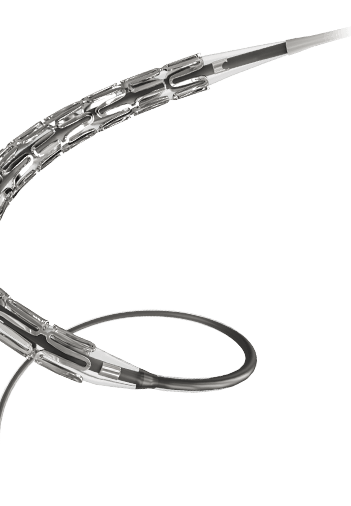Current Openings
Vacancies: 01
Education: BSc, MSc, BPharm, MPharm (Specialization in QA)
Experience: Having more than 3 years of Experience in Quality Assurance
Salary: Best in Industry
Mail your resume on : hr@espl.net.in
Job Location: Surat
Vacancies: 01
Education: BSc, MSc, BPharm, MPharm (Specialization in QA)
Experience: Having 1 to 2 years of Experience in Quality Assurance
Salary: Best in Industry
Mail your resume on : hr@espl.net.in
Job Location: Surat
Vacancies: 01
Education: BSc, MSc, (Microbiology)
Experience: Having 1 to 2 years of Experience in Quality Control Department will be an added advantage
Salary: Best in Industry
Mail your resume on : hr@espl.net.in
Job Location: Surat
Vacancies: 01
Education: BBA, MBA, B. Com, M. Com
Experience: Having 1 to 2 years of Experience in Marketing & Sales in Medical/Pharma Industry will be an added advantage
Salary: Best in Industry
Mail your resume on : hr@espl.net.in
Job Location: Ahmedabad
Vacancies: 01
Education: BSc, MSc, Any Graduates with Science Background
Experience: Having 1 to 2 years of Experience in Marketing & Sales in Medical/Pharma Industry will be an added advantage
Salary: Best in Industry
Mail your resume on : hr@espl.net.in
Job Location: Bangalore/ Delhi NCR
Careers
Yourstory.com
“Chaos isn’t a pit. Chaos is a ladder,” says the character you hate to love and secretly admire for his dangerous desire to rise to the top, on HBO’s Game of Thrones. The story you are about to read exemplifies this quote. Humble beginnings in a small town, starting several businesses even before starting-up was
cool, trundling up to the big city life and living in a one-room apartment with his new wife, innovating in a field that wasn’t his own, getting sued for millions, staging a walk-out from a company he had built, brick by brick, do not sound like the ingredients of a success story. Yet, this is how Manish Doshi, pioneer of a technology that will help drastically strengthen the odds in heart surgery, made the climb.
Startup trendsetter
A textile engineer from Baroda’s M.S. University, Manish grew up in Anand at Amul housing, as his father worked at Amul. “I was determined that I will have my own business of import-export, in spite of having no knowledge of it.” He conjured up this beautiful dream two decades before the Great Indian Startup Dream was a thing. He joined Mafatlal Fine at Navsari and worked there for five months. Looking for any trading opportunity that would provide him an entry point, he started up in Anand supplying raw materials for the paints industry. This soon turned into a chemical trading business for textile industry, which took him to
Surat. Newly-wed, he lived in a one-room apartment with his wife, until things picked up. What followed were a string of other successful ventures: laser sheet metal cutting workshop and an amusement park, but Manish felt a lacking. He wished to do something more meaningful.
The wow and the vow
It was 1998 and angioplasties were gaining prominence over bypass surgeries, when Manish came across the sneaky little devices called ‘stents,’ that would go on to change his life forever. Used in surgical procedures for the heart, these stents were small spring-like components, that, bafflingly, no Indian company had manufactured till then. “I sacrificed all my other businesses and dedicated myself
to this life-saving device that was disruptive and had global potential. I wanted to establish the first coronary stent manufacturing company of India,” he explains. With help from his partner in his laser business, Manish found out that though it was cheap to manufacture, stents were sold at staggeringly great margins.
His life’s biggest lessons
To increase acceptance among the continued scepticism from the Indian medical fraternity, they started participating in clinical trials. When they received the CE approval for their stent, they did small clinical studies in Netherlands. Then Boston Scientific and Angiotech Pharmaceuticals in the industry decided to file for patent infringement, and sued them for €25 million. The judgment was not in their favour but, fortunately, they only had to cough up only €1,400, as they hadn’t commercialised the product yet. “Although we paid less, for me, it was a €25-million lesson, which was learnt really well,” Manish says of the experience.
The MagicTouch of starting up again
An alternative to using stents during surgery was balloon angioplasty, and just like the stents, the balloon also had to be coated with a drug that helps the body accept the implant. Under the newly christened Concept Medical, the MagicTouch technology was a sirolimus-coated balloon to treat coronary artery blockage without help of external scaffolds like stent. Supported by his Brazilian friends, Manish incorporated Concept Medical, a cardiovascular device business that advances innovation and develops next-generation products in the field, and protects technology with patents in USA, Europe and Japan.
Limus-based drug-eluting stents have been proven as more favourable compared to Paclitaxel drug-eluting stents. Currently, all drug-eluting balloons manufactured by companies like Medtronic, B Brown, Eurocore etc., use Paclitaxel. “Limus is difficult and challenging to deliver from a balloon catheter, and is difficult to coat on to the balloon. It is also very tricky to retain the drug in arterial wall for longer
period to treat the disease. Many companies tried to develop this technology, but failed. So at present, we are the only company that makes this product,” Manish explains. They used nanotechnology, and the entire development was done in-house.

